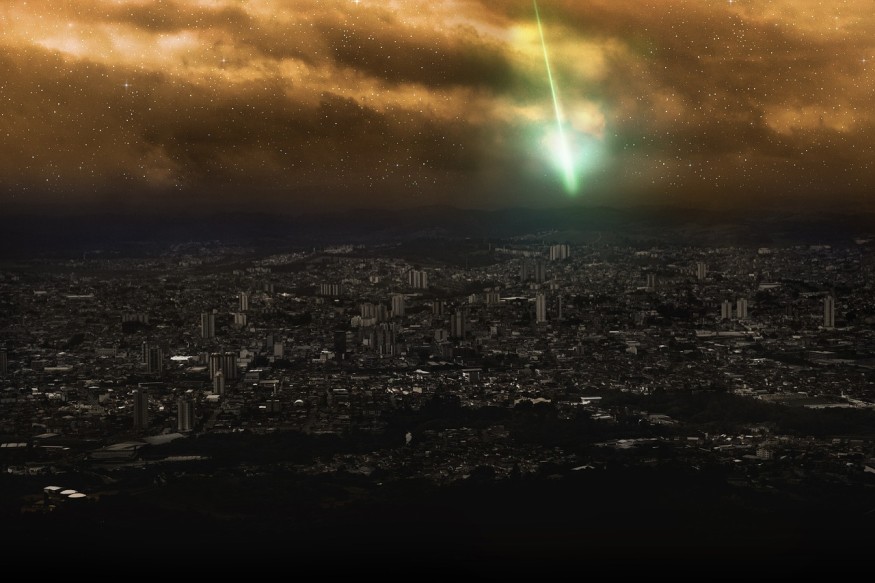A green fireball reportedly hovered the skies of Eastern United States and Canada during the weekend before making an impact in Lake Ontario during the dead of night. Reports indicate that anecdotal evidence from witnesses show the green meteor was seen several hours before it touched the Earth's surface, located near the US-Canada border. There was no immediate report of damage or casualties.
Green Night Sky Meteor

The National Aeronautics and Space Administration (NASA) stated that a probable meteorite fell from the sky east of Grimsby, Ontario, Canada, on the wee hours of Saturday, November 19. Based on radar signatures of falling meteorites, Saturday's space rock mostly landed in Lake Ontario but small masses could be found east of Grimsby and large masses might landed near McNab.
The green night sky meteor lightens up the surroundings of Lake Ontario and its nearby areas as the space object flared into the Earth's atmosphere at 3:00 a.m. EST (local time) on Saturday. NASA said the it was a small meteor, which was detected by astronomers just three hours before it entered our planet, wherein afterwards it broke up into hundreds of pieces.
The US space agency states most of the meteorite fragments likely pummeled straight into Lake Ontario, while some small chunks may have struck land along the lake's southern shore, the US space agency adds.
Green Meteor Witnesses
Witnesses reported observing a helicopter-like object flying silently through the air before lighting up the night sky similar to a massive lightning bolt, but it disappeared after 10 seconds, according to Live Science.
In addition, witnesses of the green meteor include at least 64 people in the states of New York, Maryland, Ohio, Indiana, Pennsylvania, and the nearby Canadian province of Ontario, according to the meteor-watching database of the International Meteor Organization (IMO).
Several photos and videos of the green fireball were taken by witnesses, including from one witness named Dereck Bowen of Brantford, Ontario, Live Science reports. Meanwhile, at least seven observatories worldwide took part in witnessing the rare astronomical event during the early morning of November 19.
2022 WJ1: The Green Fireball
Space authorities have named the green meteor as 2022 WJ1, also referred to as the November 19 fireball. Estimates show that 2022 WJ1 was likely a small asteroid or meteoroid, measuring no more than 3.2 feet (1 meter) in diameter.
The color of the bright meteor, although spectacular, is a product of both atmospheric and chemical reaction with the space rock. According to astronomers at the Cornell University, the color of either meteors or shooting stars is influenced by two factors: meteoroid chemical composition and the interaction of its atoms to our atmosphere's molecules.
In July, several green meteor sightings were reported across New Zealand, as well as a separate yet related incident near the country's capital city of Wellington, where an orange fireball exploded and generated a sonic boom.
© 2025 NatureWorldNews.com All rights reserved. Do not reproduce without permission.





